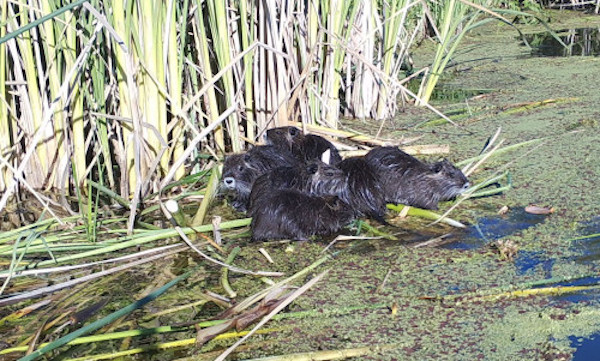Fish Report for 6-7-2019
Why No Bounty Program for Nutria?

by California Department of Fish & Wildlife
6-7-2019
Website
Question: I’ve been following the effort to eradicate invasive nutria from California. Why not let the state’s hunters and trappers help by offering a bounty on nutria? Louisiana pays $5 for every nutria tail hunters and trappers turn in. Surely, California could use the help and a bounty program might be more cost-effective than paying full-time salaried biologists and professional trappers to do all the work. (Simon)
Answer: It’s a fair question, and one we are asked frequently. There are several issues preventing the state from offering a bounty on nutria. First and foremost, it’s illegal. California Fish and Game Code, section 2019 clearly states: “It is unlawful for any person, including state, federal, county and city officials or their agents, to authorize, offer or pay a bounty for any bird or mammal.” It would take state legislation to change the code and provide an exception for nutria.
Aside from the laws, bounty programs are not a strategy for eradication. They are an incentive to generate help with controlling a population and, particularly in the case of nutria, reduce the damage they cause.
California is in a very different situation than Louisiana, which has millions of nutria and no hope of eradicating them. Louisiana’s bounty program is a tool to help control the population and reduce the area of coastal and wetland acreage lost to nutria damage each year. For the last 12 years, Louisiana’s bounty program has seen average harvests of more than 330,000 nutria per year – just to control the population. Furthermore, a bounty program in California might incentivize someone to breed nutria for the bounty, perhaps release captive animals or relocate them to other parts of the state.
Eradication is a very different goal than control. CDFW biologists need to account for every single animal to determine the extent of the infestation, status of breeding populations, and to ultimately succeed in permanently removing nutria from the state. That is why it’s so critical to the state’s eradication efforts that any suspected nutria – alive or dead – be reported promptly to CDFW at (866) 440-9530 or invasives@wildlife.ca.gov. Accompanying photos or videos are especially helpful.
Another complicating factor is that nutria look like and are often confused with other species of native wildlife that occupy the same kind of wetland habitat, including muskrats, beavers, river otters and even rats. A bounty program would likely result in the killing of a lot of other wildlife mistaken for nutria.
Even without a bounty program, nutria can be taken legally by licensed hunters and trappers as a rodent and nongame mammal (CCR Title 14, section 472). Again, hunters need to be careful not to mistake other wildlife for nutria. These other species may be protected or may have hunting seasons and bag limits governing their take. Nutria identification resources are available at CDFW’s nutria webpage. Property owners, their employees and representatives can take nutria at any time and by any legal means to protect their property without a hunting or trapping license (FGC, section 4152).
More Reports

6-4-2019
Various Days — Guided Wetland Tours at Gray Lodge Wildlife Area, 3207 Rutherford Road, Gridley (95948). A wildlife naturalist will...... Read More
Trout Fest 2019
Hot Creek Hatchery
5-31-2019
Join us for Trout Fest on June 29, 2019 at Hot Creek Hatchery. All Activities are free and all gear...... Read More

Website Hosting and Design provided by TECK.net